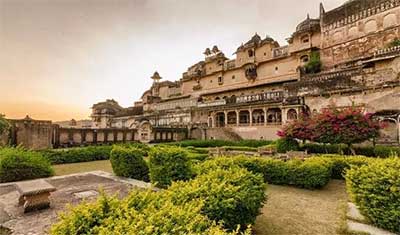Daily-current-affairs
/
26 Oct 2020
Bundi: Architectural Heritage of a Forgotten Rajput Capital : Daily Current Affairs

Bundi: Architectural Heritage of a Forgotten Rajput
Capital
IN NEWS
- The Ministry of Tourism’s Dekho Apna Desh Webinar series titled “Bundi: Architectural Heritage of a
Forgotten Rajput Capital” on 24th October 2020 focused on Bundi, Rajasthan.
ABOUT
- Dekho Apna Desh Webinar Series is an effort to showcase India’s rich diversity under Ek Bharat Shreshtha
Bharat.
- Bundi erstwhile capital of Hada Rajput province known as Hadauti located in south-eastern Rajasthan is
one such place.
- Bundi is also known as City of stepwalls, blue city and also as Chotti Kashi. In ancient times, the area
around Bundi was apparently inhabited by various local tribes, of which the Parihar Tribes, Meena was
prominent.
- Bundi was also known as Chotti Kashi owing to presence of over hundred temples within and around the
hada capital. Despite being a Vassal State of Mughal empire, Hada rulers not only retained their Hindu
religious and cultural traditions but escalated their unflinching affiliation to them manifesting it in large
number of temples built during four centuries of Hada hegemony.
BACKGROUND
- Later the region was governed by Rao Deva, who took over Bundi from Jaita Meena in 1242, renaming the
surrounding area as Haravati or Haroti.
- For the next two centuries, the Hadas of Bundi were the vassals of the Sisodias of Mewar and ruled by the
title of Rao until 1569, when Emperor Akbar conferred the title of Rao Raja upon Rao Surjan Singh after
the surrender of Ranthambore Fort and his submission.
- In 1632, Rao Raja Chattar Sal became the ruler; he was one of the most valiant, principled and just kings
of Bundi.
- He built the temple of Keshavarao at Keshoraipatan and Chathra Mahal at Bundi. He became king of
Bundi after his grandfather Rao Ratan Singh, as his father Gopinath died while Ratan Singh was still ruling.
- Rao Chattar Sal died fighting valiantly as the head of his Hada Rajput troops in the Battle of Samugarh in
1658 along with his youngest son Bharat Singh Rao Bhao Singh, the eldest son of Chhattar Sal succeeded
his father to the throne of Bundi.
- In 1804 Rao Raja Bishan Singh gave valuable assistance to Colonel Monson in his disastrous retreat before
Holkar, in revenge for which the Maratha Empire and Pindaris continually ravaged his state and forced the
kingdom to pay tribute up to 1817.
- Temples constructed in early phase of Bundi’s growth were is classical Nagara style, while in later phases
new temple typologies emerged from amalgamation of architectural form of traditional haveli with the
classical Nagara style.
WATER ARCHITECTURE
- Best example of medieval Indian city exhibiting water harvesting methods adopted at settlement level as
well as finest examples of water architecture. Location of Baoris and Kunds outside the walled city was
also influenced by social considerations as access to baoris and kunds were located within walled city was
controlled.







